Publications
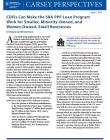
April 7, 2020
As currently being implemented by the Small Business Administration, the loans made available through the $349 billion Paycheck Protection Program, part of the CARES Act recently enacted to address the COVID-19 crisis, are likely to significantly bypass smaller small businesses and those that are minority- or women-owned.
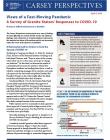
April 6, 2020
In this brief, authors Thomas Safford and Lawrence Hamilton report the results of a Granite State Panel survey (March 17-26), asking New Hampshire residents about their views concerning government responses to the coronavirus (COVID-19) and whether they changed their daily routine because of the pandemic.
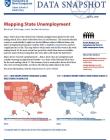
April 3, 2020
In this data snapshot, authors Michael Ettlinger and Jordan Hensley report the relative level of initial unemployment claims for the week ending March 28, and relative “insured unemployment” for the week ending March 21, each as a share of the (February) labor force.

March 31, 2020
In this brief, Jess Carson explores the poverty-reducing effects of key federal safety net programs among 18-24 year old (“young adult”) parents.
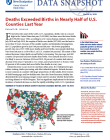
March 26, 2020
In this data snapshot, author Kenneth Johnson reports that even before the onset of the SARS-CoV-2 pandemic, deaths were at a record high in the United States last year, but there were the fewest births since 1986, according to new Census Bureau estimates.
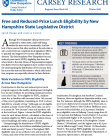
March 19, 2020
This brief translates New Hampshire free and reduced-price lunch eligibility data from the school level to the state House of Representatives legislative district level so that legislators have another resource for understanding the distribution of low-income families across the state and the extent to which child nutrition programs are especially relevant in their districts.
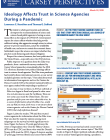
March 18, 2020
In this perspectives brief, authors Lawrence Hamilton and Thomas Safford discuss the enormous effect that the extent to which governments and individuals respect the recommendations of science and science-based public agencies is having on the impact of COVID-19.
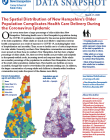
March 17, 2020
In this data snapshot, author Kenneth Johnson discusses the uneven spatial distribution of New Hampshire’s older population and suggests that it may complicate the delivery of health care to the state’s population during the COVID-19 epidemic.
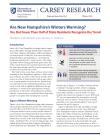
February 17, 2020
In this brief, authors Elizabeth Burakowski and Lawrence Hamilton review some basic evidence about winter warming in New Hampshire, explore to what extent state residents are aware of this trend, and ask who is aware, in terms of characteristics such as age, education, or participation in winter sports.
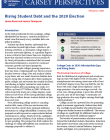
February 5, 2020
In this perspectives brief, authors James Kvaal and Jessica Thompson explore the challenge of college affordability and summarize the campaign proposals to address it.
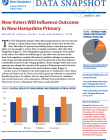
February 4, 2020
In this data snapshot, authors Kenneth Johnson, Dante Scala, and Andrew Smith discuss factors that could influence the outcome of New Hampshire's 2020 Primary.
January 27, 2020
In this data snapshot, author Jordan Hensley reports on top presidential candidate spending on Facebook ads in New Hampshire.
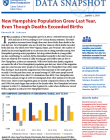
January 2, 2020
In this data snapshot, author Kenneth Johnson reports the population of New Hampshire grew by 6,200 to 1,360,000 between July of 2018 and July of 2019 according to new Census Bureau estimates. The state’s population increased even though there were fewer births than deaths in the state last year.
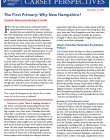
December 23, 2019
For the past half century, political leaders, representatives of various states, and media pundits have excoriated the premier positions that New Hampshire and Iowa hold in the presidential delegate selection process.
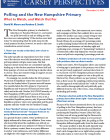
December 19, 2019
In this brief, authors David Moore and Andrew Smith discuss caveats that should be considered when interpreting what the polls mean for the February 2020 New Hampshire primary.

December 16, 2019
In this brief, authors Kenneth Johnson, Dante Scala, and Andrew Smith discuss demographic forces that are reshaping the New Hampshire landscape.
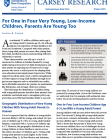
December 12, 2019
This brief maps the distribution of children living with young adult parents, describes their parents’ characteristics, and details ways to strengthen policy supports that can fortify their families’ ability to succeed.

November 19, 2019
In this brief, author Kenneth Johnson reports that New Hampshire gained 40,000 residents (a 3 percent increase) between 2010 and 2018, and the population reached 1,356,458 on July 1, 2018, according to the Census Bureau.

November 5, 2019
In this brief, authors Michael Ettlinger, Jordan Hensley, and Julia Vieira analyze how much the governments of different countries spend, and on what, to illuminate the range of fiscal policy options available and provide a basis for determining which approaches work best.

October 29, 2019
In this brief, authors Daniel Bromberg, Étienne Charbonneau, and Andrew Smith present the findings of a 2017 Granite State Poll asking New Hampshire residents how they feel about the Department of Motor Vehicles sharing their driver’s license photos with the Federal Bureau of Investigations.
